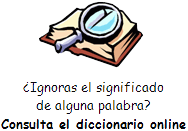In the
humorous American television program Seinfeld, the characters often find
themselves in strange situations because of small communication failures.
These little misunderstandings grow to the point of total confusion.
For example, in one show, Jerry and George take a limousine, or limo,
meant for other passengers. They act like they are those passengers by
using their names.
Listen to George express excitement about what they have done:
This is incredible! This is one of the greatest things I've ever done in
my life! I'm going to call my mother.
What for?
To tell her I'm in a limo.
Hello, ma. It's me. Guess where I am – in the
back of a limo! No, nobody died.
Some of the planned passengers later unexpectedly get in the limo and
begin to make unusual comments. Jerry and George are unsure what these
comments mean. But they soon find out they are among very, very bad
people.
On television, communication failures can make for funny stories. But in
real life, you probably want to avoid such confusion.
In today’s program, we will tell you how to get clarification on what
someone has said or written.
When you ask someone for clarification, you are asking them to say
something in a different way or provide more information so that you
understand them better. This is different from asking a person to repeat
something.
The person might not have explained themselves clearly, for example. Or
maybe they used difficult language. Or maybe you think you know what the
person means but want to make sure that you are correct.
Here is how you can respectfully get the information that you need.
Express lack of understanding
The first step is to tell the person that you are not sure that you have
understood them fully. Let’s listen to a few useful phrases:
I’m sorry but I’m not sure (that) I understand.
Sorry, I’m not sure (that) I know what you mean.
Sorry but I don’t quite follow you.
Using the word “that” in two of the phrases is more suited for formal
written communication, such as work-related emails.
Other times, you may understand part of what someone has said but need
clarity on another part. In such situations, you can be more exact.
Let’s hear a few examples:
I’m sorry but I’m not sure I understand what you mean by "tech giants."
Sorry but I don’t quite follow what you’re saying about the new policy.
Ask for clarification
After you express your lack of understanding, the next step is to ask
the person to clarify what they have said. Here are some phrases you can
use.
For many of them, you can use “can” or “could,” with could being a
little more formal:
Could you say it in another way?
Can you clarify that for me?
Could you rephrase that?
When you say…, do you mean…?
The phrase “When you say…, do you mean…?” of course is not a complete
sentence. Here is how it sounds when complete:
When you say workers are on furlough, do you mean they’re temporarily
laid off from work?
Other times, you may simply need more information or a helpful example.
In such situations, the following are useful:
Could you be more specific?
Can you give me an example?
Could you elaborate on that?
“Could you elaborate on that?” is usually more suited to formal
situations, such as in the workplace.
Put it together
OK, we have talked about the two steps. But we haven't yet put them
together. Let’s do that now. Listen to someone expressing lack of
understanding and asking for clarification:
I’m sorry but I’m not sure I understand. When you say workers are on
furlough, do you mean they’re temporarily laid off from work?
Here’s another example:
Sorry but I don’t quite follow what you’re saying about the new policy.
Could you be more specific about gift card restrictions?
Confirm understanding
There are some social or professional situations in which you may want
to avoid directly saying you haven’t understood. In such cases, you can
check your understanding by rephrasing what the person said. For
instance, you might say, “Let me see if I understood you correctly. You
are saying that…”
Let me see if I understood you correctly. You’re saying that airport
security workers are now working without pay?
Here is a very similar phrase: “If I understand you correctly, you’re
saying that…”
If I understand you correctly, you’re saying that airport security
workers are now working without pay?
Another phrase you might use is, “So, what you’re saying is…”
So, what you’re saying is (that) some hotels offer discounts to guests
for not using their cellphones?
Or, you might say, “So, in other words…,” which we usually use when we
are restating something in a simpler way:
So, in other words, complex carbohydrates are starches that have not
been refined.
Offer thanks
After the person clarifies themselves, you can let them know that you
now understand and are thankful. Have a listen:
I got it. Thank you!
Ah, I see. Thanks for clarifying.
Now I understand. Thanks a lot.
Clarify your ideas
There are other times when someone will ask you for clarification. In
such cases, phrases like these can introduce what you want to say:
In other words,…
Let me clarify that.
To put it another way,…
Of course, there are many ways to ask for or offer clarification, but we
hope these examples help. |
 Sugerencias:
Sugerencias:![]() ). Utiliza el botón derecho del ratón y "guardar enlace" para
descargar el fichero a tu PC, tablet, Smartphone, etc.
). Utiliza el botón derecho del ratón y "guardar enlace" para
descargar el fichero a tu PC, tablet, Smartphone, etc.
![]() Escucha el audio
Escucha el audio
![]() ¿Quieres recibir en tu e-mail gratis y
periódicamente ejercicios, programas gratuitos, explicaciones y otros recursos
para mantener tu inglés sin esfuerzo? Apúntate a nuestro
cuaderno mensual de inglés.
¿Quieres recibir en tu e-mail gratis y
periódicamente ejercicios, programas gratuitos, explicaciones y otros recursos
para mantener tu inglés sin esfuerzo? Apúntate a nuestro
cuaderno mensual de inglés.




